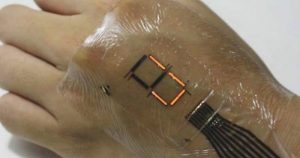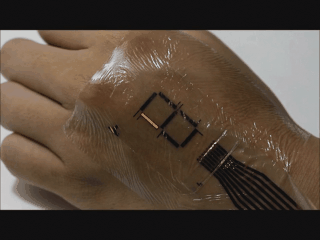
This Electronic Tattoo Turns Your Body Skin Into Digital Screen
Scientists from the University of Tokyo has developed an ultrathin, protective layer to create an ‘electronic skin’. This is an example of integrating electronic devices with the human body. This thin layer displays blood oxygen levels, e-skin heart rate sensors for athletes and other applications. It was demonstrated by creating an air-stable, organic light-emitting diode (OLED) display.
The main goal of the researchers about integrating electronic devices with the human body is to enhance and restore body function for biomedical applications. Wearable electronic devices need to be very thin and flexible to minimize the impact on the body. Cool tattoo for men, isn’t it?

Tattoo-like ‘e-skin’ turns your body into digital screen:
Earlier, many devices were developed and required millimeter-scale thickness glass or plastic substrates with limited flexibility, while micrometer-scale thin flexible organic devices have not been stable enough to survive in air.

Study author and Professor Takao Someya asked, “What would the world be like if we had displays that could adhere to our bodies and even show our emotions or level of stress or unease?”
“The advent of mobile phones has changed the way we communicate. While these communication tools are getting smaller and smaller, they are still discrete devices that we have to carry with us,” Takao Someya said.
The research group was able to attach transparent indium tin oxide (ITO) electrodes to an ultrathin substrate without damaging it, making the e-skin display possible. Using the new protective layer and ITO electrodes, the research group created polymer light-emitting diodes (PLEDs) and organic photodetectors (OPDs). These were thin enough to be attached to the skin and flexible enough to distort and crumple in response to body movement.